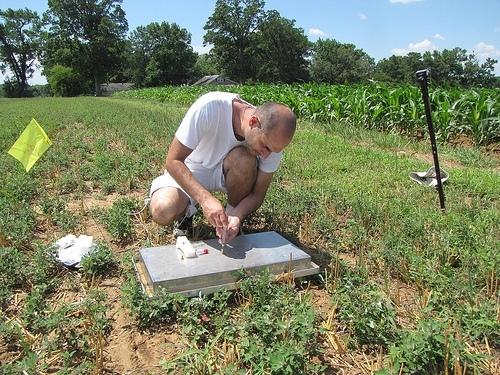Greenhouse Gases
 In 2013, total U.S. greenhouse gas emissions measured 6,673 million metric tons of carbon dioxide equivalents (MMT CO2 eq.), rising 5.9 percent from 1990 estimates from the EPA. Global concentrations of the three most important long-lived greenhouse gases (GHG) in the atmosphere have increased measurably since the onset of the Industrial Revolution in 1750. Agriculture and forestry practices may either contribute to or remove GHGs from the atmosphere. Agriculture and forestry have contributed to GHGs in the atmosphere through cultivation and fertilization of soils, production of ruminant livestock, management of livestock manure, land use conversions, and fuel consumption. (Source: U.S. Agriculture and Forestry Greenhouse Gas Inventory: 1990-2013)
In 2013, total U.S. greenhouse gas emissions measured 6,673 million metric tons of carbon dioxide equivalents (MMT CO2 eq.), rising 5.9 percent from 1990 estimates from the EPA. Global concentrations of the three most important long-lived greenhouse gases (GHG) in the atmosphere have increased measurably since the onset of the Industrial Revolution in 1750. Agriculture and forestry practices may either contribute to or remove GHGs from the atmosphere. Agriculture and forestry have contributed to GHGs in the atmosphere through cultivation and fertilization of soils, production of ruminant livestock, management of livestock manure, land use conversions, and fuel consumption. (Source: U.S. Agriculture and Forestry Greenhouse Gas Inventory: 1990-2013)
-
UVM Dairy Farming Research
Research at dairy farms in Vermont shows how management practices can affect water quality, economics, and greenhouse…
-
Adapting for the Future
Researchers in the Northern Plains have been studying how changes in the atmosphere might impact rangelands throughout…
-
Northeast Climate Hub Webinar Series
This webinar series builds on capacity within USDA to deliver science-based knowledge and practical information to…
-
Greenhouse Gas Mitigation Workshop
The USDA Northeast Climate Hub, in conjunction with the University of Maryland, hosted a regional workshop to address…
-
Bioenergy in a Changing Climate
Dr. Manyowa (Norman) Meki (USDA ARS) is gathering field data and simulating several types of biofuels.
-
Climate Change 101

Frequently asked questions and answers are from the USDA Forest Service Climate Change Resource Center (CCRC), which…






